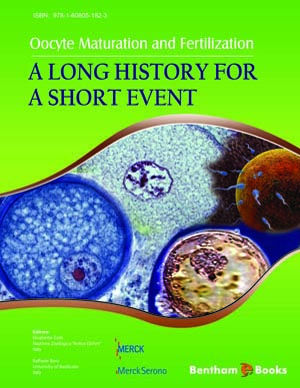Abstract
Fertilization is the process by which male and female gametes, and their respective haploid genomes, fuse to form a single cell (the zygote) containing a complete diploid complement of genetic material representative of each parent. The male gamete, the sperm, transduces an activation stimulus to the awaiting female gamete, the egg (also, oocyte or ova), initiating a cascade of events collectively referred to as egg activation. The mechanisms of this process are both complex and tightly coordinated in order to impart a high level of fidelity necessary for initiation of embryonic development and propagation of the species. Although mechanistic discrepancies of this event exist even between species of the same phyla, calcium is the predominant driving force of egg activation in all species studied to date, and is responsible for promoting the resumption and exit of meiosis and the initiation of the developmental program. This chapter will focus on recent discoveries of the molecular mechanisms of egg activation with specific regard to the regulation of calcium signaling as it appears in the oscillatory mammalian system.












